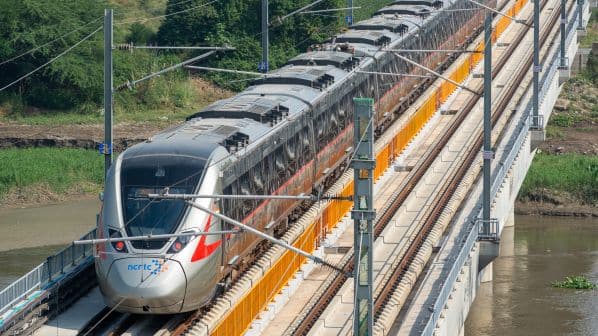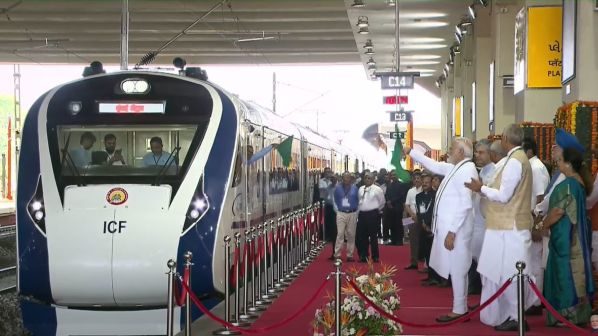THE Indian government revealed plans to establish three major economic railway corridors in its interim budget announcement on February 1: one for transport of cement, fuel and minerals, another to provide improved port connectivity, and a third to relieve Indian Railways’ (IR) most intensely-used lines to improve passenger train performance.
The precise routes, details of funding and project timelines have yet to be announced.
India’s finance minister, Ms Nirmala Sitharaman, announced the plan in the interim budget, which includes the highest ever allocation of Rs 2.55 trillion ($US 30.93bn) to Indian Railways (IR) for the coming financial year. This is up from Rs 2.4 trillion last financial year, and given the government's focus on building railway infrastructure, analysts are expecting the final budget allocation for IR to exceed Rs 3 trillion this year.
The interim budget was presented ahead of India’s general election in March. The new government will announce the full budget in May or June.
“The rail corridor projects have been identified under the prime minister's Gati Shakti plan for enabling multimodal connectivity,” Sitharaman says. “These will improve logistics efficiency and reduce costs.”
The budget also includes proposals to expand the development of metro networks in more Indian cities, along with commuter railways similar to the Regional Rapid Transit System, the first 17km section of which opened in the National Capital Region centred on Delhi in October.
Sitharaman also proposed that 40,000 Mail and Express coaches currently running on the mainline network would be upgraded to match the standards of 160km/h Vande Bharat EMUs. The announcement hints at an upgrade of the existing coach interiors to offer automatic passenger doors, vacuum toilets, better lighting and other facilities aimed at enhancing passenger comfort.
However, it is unlikely that the speed of these trains, which operate at an average of 52km/h, will increase. Track and signalling limitations and the slow pace of upgrades are currently restricting operation of the Vande Bharat trains to 40-92km/h. The Delhi - Varanasi Vande Bharat service is currently the fastest, running at an average speed of 92km/h.
Private investment
In her budget speech last year, Sitharaman announced the formation of an Infrastructure Finance Secretariat, which was proposed to assist stakeholders attract more private investment.
Last year’s capital outlay was nine times the outlay in 2013-14, with the allocation rising over 30 times the budgetary support provided in 2004-05 as India seeks to improve the condition of its railway network.
In 2022, IR announced an ambitious plan to expand rail infrastructure by 2027-28 to carry 3000 million tonnes of freight by 2030. Under this plan, over 1200 projects are proposed to be completed within five years with a projected capital expenditure of Rs 8450bn.
The industry is upbeat about the government’s new initiatives announced in the interim budget.
“The announcements for the railway sector, including metro projects, three major rail corridors and train upgrade plans, have provided opportunities for private players to introduce world-class rolling stock, rail equipment and infrastructure, signalling and services”, says Mr Olivier Loison, managing director of Alstom India.


